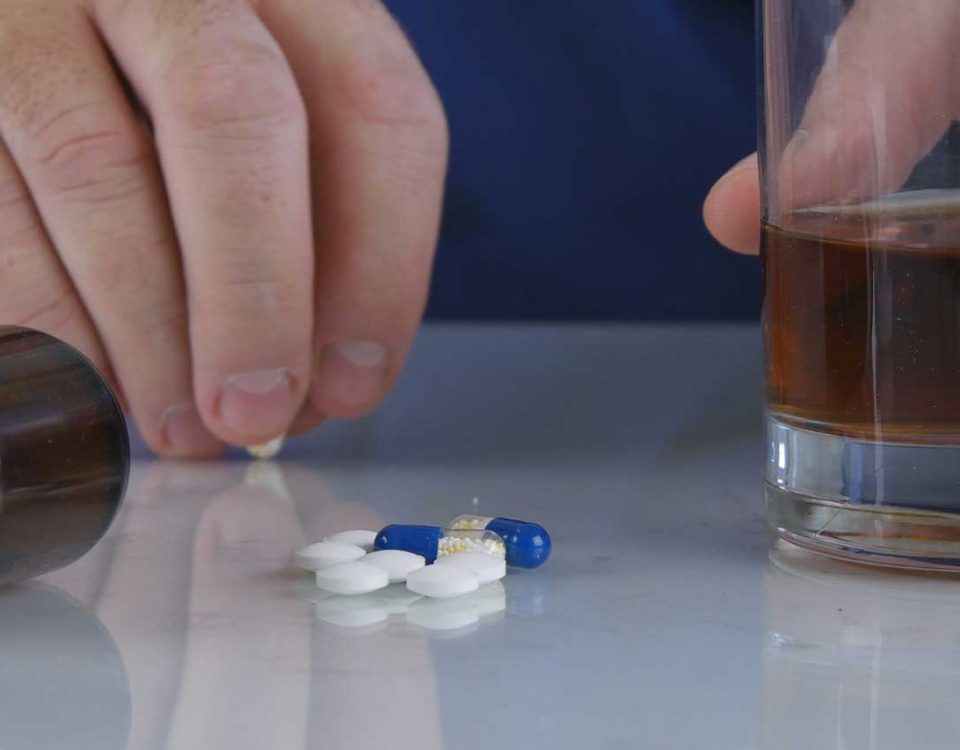Formally known as Benzedrine, the drug has shown up in media ranging from Sylvia Plath’s The Bell Jar to the REM song What’s The Frequency, Kenneth? to the TV series The Man In the High Castle. However, because the drug was most popular in the 1930s through the 1960s, a lot of people are not familiar with what bennies are or their effects. Below is more on this once-unregulated drug and why the Food and Drug Administration (FDA) decided to step in.
What Are “Bennies” Pills?
“Bennies” is slang for Benzedrine, which is the brand name for the drug amphetamine. First created by a Romanian chemist in 1887, the drug was rediscovered and patented in 1932 by the American scientist Gordon Alles. At the time, Alles was trying to create the drug simply to treat nasal congestion. The result is what is known today as the amphetamines drug class.
After patenting Benzedrine tablets, Alles joined the drug company Smith, Kline, and French, now known as GlaxoSmithKline. Together, they heavily marketed bennies as wonder drugs, and because prescription drugs did not exist at the time, the drug was initially sold over the counter.
Following its patenting, Benzedrine uses included:
- A study aid for college students starting in the 1930s
- A tool to keep American soldiers awake, confident, and focused during World War II
- A diet and mood pill for housewives in the 1950s and 1960s
- A muse and energy booster to artists during the Beatnik period of the 1960s
Benzedrine Inhaler
Benzedrine also became available in other forms, including an inhaler and pills. Benzedrine inhalers were meant to help with nasal congestion, as was the original idea for the medication. Unfortunately, those were commonly abused for their stimulant effects. People would often buy the inhaler, open them up, and swallow the wet paper inside to get high, stay focused, and elevate their mood.
There are written instances of this happening. For instance, the author, Jack Kerouac, often used Benzedrine and wrote some of his most famous novels, like On The Road, while high on Benzedrine. Smith, Kline, and French claimed to have sold more than 10 million Benzedrine inhalers within the first seven years after their release.1 They were eventually banned in 1959.
Benzedrine Pills
Also referred to as “go pills” in the military, stimulants like Benzedrine sulfate pills were widespread during World War II. At the time, American forces were often given Benzedrine to stay awake, energized, and motivated. By the end of 1945, companies were selling around 750 million Benzedrine pills a year, which became 8 billion per year by 1962 due to civilian use.1 Women were using Benzedrine at the time alongside other colorful pills referred to as “rainbow pills” for weight loss and mood.
What Does Benzedrine Do?
Benzedrine, or amphetamine, works by increasing neurotransmitter activity in the central nervous system, particularly the activity of chemicals dopamine, norepinephrine, and serotonin. When these chemicals are elevated, they can lead to physical and behavioral changes.
Common Benzedrine side effects include:
- Alertness
- Energy
- Talkativeness
- Increased focus and concentration
- Euphoria or joy
Because of benzedrine’s effects on dopamine, the drug was also associated with a euphoric high, which is what drove users to continue using it, even if the original intent of use was not to get high. Over time, the brain becomes accustomed to this artificially produced sensation, leading to tolerance, physical dependence on the drug, and eventually addiction.
Although Benzedrine is an older brand-name medication, amphetamine use is still quite common, as is an addiction to it. Because this drug can have a long-term impact on a person’s physical and mental health, it is advised that those who have developed an addiction to amphetamine seek out professional illicit or prescription drug addiction treatment to recover under medical supervision and care.
Is Benzedrine Still Available?
Throughout the years, Benzedrine uses have continuously changed. From the 1930s to the 1990s, Benzedrine was used for nasal congestion, narcolepsy, appetite suppression, schizophrenia, morphine addiction, alcoholism, behavioral issues in children, combat fatigue during World War II, and the manufacturing of methamphetamine and designer drugs, to name a few. Before the dangers of abuse and addiction became apparent, Benzedrine was available over the counter.
Once adverse Benzedrine effects like palpitations, convulsions, and psychosis were recognized, the drug was classified as a Schedule II substance under the Federal Controlled Substances Act in 1970. Even so, amphetamines remained popular drugs of abuse and still are. Motorcycle gangs would conceal methamphetamine (meth) in the crankcases of their bikes, which led to the term “crank.”
Meth abuse also resurged in the 1980s and 1990s, along with designer drugs like methylenedioxymethamphetamine (MDMA). These were popular at raves and clubs, eventually promoting the Methamphetamine Control Act of 1996.2
While the brand name Benzedrine is no longer in use, it is still legal, albeit highly controlled. “Bennies” are now available as the generic drug amphetamine, which is prescribed under various brand names and can still lead to addiction in users. Since being regulated by the Drug Enforcement Agency (DEA) as a Schedule II Controlled Substance, Benzedrine is now sold as Adzenys, Dyanavel, and Evekeo.
As the first amphetamine, Benzedrine paved the way for other amphetamine-related medications that are commonly prescribed today, such as:
- Adderall
- Dexedrine
- Mydayis
- ProCentra
- Vyvanse
- Zenzedi
While Benzedrine is not available (under this brand name), its active ingredient, amphetamine, is commonly used via the drugs listed above to treat conditions like attention-deficit hyperactivity disorder (ADHD), binge eating disorder, and narcolepsy.
Amphetamine Addiction Treatment
While the “benny addict” is a thing of the past, amphetamine abuse is not. If you or a loved one is battling an addiction to any type of amphetamine, whether that be a prescription drug like Adderall or an illicit drug like meth, our rehab in Philadelphia can help. We offer prescription drug and meth addiction treatment, among a variety of other services, to support long-term sobriety.
For more information about our Philadelphia substance abuse programs and how we can help, call Banyan Treatment Centers today at 888-280-4763 or send us your contact information.
Sources:
- Science History Institute - Fast Times: The Life, Death, and Rebirth of Amphetamine
- ScienceDirect - Benzedrine
Related Reading:









